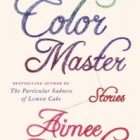When Do I Have Enough Back Story?

I had a great idea for a story. The main character is a 32-year-old actor who lives in Brooklyn. He is looking for his runaway sister, and…
Wait. Actor? What kind of actor? What has he been in? Did he always want to be an actor? Most actors can’t support themselves just acting. Does he have a side job? If so, what?
And he’s 32 years old? What did he do for the other 31 years of his life? Was he always an actor? Did he study acting in school? Where did he go to school? Is he married? Single? Does he date? Women or men? And why Brooklyn? Is Brooklyn cliché at this point?
With one sentence of plot summary, I raised dozens of questions that I could answer if I choose to do so. Of course, I can’t answer all of these questions in a short story. If I did, the story would be 17,000 pages long, and would still have unresolved questions because, in trying to answer these questions, I will raise a billion more.
Every short story writer at some point has to decide when to stop telling the back story. I need some back story, or else the story makes no sense and has no resonance with the reader. However, if I have too much, I will bore the reader and take away from the impact of the present story. How do I know when I have enough back story? This is an especially critical question for short story writers, who must be efficient because we are often faced with word limits.
I am by no means a guru on the short story, but, personally (if you want the two-cents of someone who has published a few times but has no agent or book deal), I tend to think of a story as a journey seen through the eyes of the characters. To appreciate the journey as a reader, I need to learn a little about the history, the people, and the surroundings. However, for the journey to be special I don’t need to know everything, and if I spend too much time learning about the set up for the journey, I will likely lose interest and start to wonder why I started in the first place.
For example, I recently went to Peru. I loved it. I could have read forty books on Peru before my trip, and watched fifteen different DVD’s about different aspects of Peruvian culture. I did not. I read Lonely Planet, perused a couple of travel articles, did some online research, and had a guide give us a tour of the major sites. I learned enough about Machu Picchu so that it was more than an impressive collection of rocks to me. I learned enough about the Peruvian culture so I could appreciate the significance of certain sites, tastes and sounds. However, I did not need an exhaustive seminar on Peru to enjoy my trip. I didn’t have time for that, and if even if I did, if I spent too much time studying, I would probably resent Peru for taking up so much of my precious time.
Similarly, I believe the back story only needs to explain enough about the characters so that the reader cares about them on their journeys. However, trying to get in every detail about the main character’s life and background will turn an enjoyable journey into more of a chore for the reader. I believe I need to show enough to make the journey have an emotional impact for the reader, but stop when I have that much. Take our 32-year-old actor in Brooklyn, for example. If the whole point of the story is his chase for his runaway sister, all of the questions I presented in the beginning are pretty irrelevant. The point of the story is, will he find his sister? Thus, to establish the urgency of his quest, I decided to show what his relationship with his sister was like. There are about a million different ways to do this, but I thought the best way would be to flashback to a specific event that illustrates his love for his sister in a way that is pertinent to present day. Some will disagree, as many writers believe that extended flashbacks are no longer in fashion, but I still find them to be the most entertaining and satisfying way of establishing a back story.
However, beyond that, I decided the reader didn’t need to know a whole lot more about my 32-year old actor. Once I establish why he’s looking for his sister and what’s personally at stake for him, I returned to the present day chase.
The length of the back story for me depends on how much information I believe the reader needs to know in order to make the present story emotionally impactful. In my story “The Gospel of Blackbird” which was published in Ploughshares, I did a very extensive back story in two long flashbacks. I felt that the story needed all of this because the present day quest required a lot of explanation: Lost love, Korean American heritage, Christian upbringing, family strife and economic class differences. Because I needed so much background to bring the reader to understand the characters, half the story is in flashback. Without that much back story, I don’t believe there would have been as much emotional impact at the story’s end.
In some instances, however, the back story can be quite short. Let’s look at an example from history, from a writer who has achieved far more prominence than I have: Ernest Hemingway. He wrote the story with quite possibly the least amount of back story in the history of literature, the six-word story:
Baby shoes. For sale. Never worn.
I could just see this in a workshop and members asking, Who is selling the shoes? Why were they never worn? Did the baby die? Or was it aborted? Miscarriage? Those details are unanswered, and I could go on and on about what ISN’T in this story.
That’s not the point of the story, however. More important than what isn’t here, is what IS here.
In my humble opinion, we don’t need to know anything beyond what Hemingway has told us. There are two words of back story. Never Worn. That little bit of explanation tells us everything we need to know about the past for the story to have a true emotional impact. It’s a great, tragic story as is. [Applause].
Please note that the above-cited six-word story is often attributed to Hemingway, but his authorship has never been proven. Also, the story is cited in different forms, the most common of which is: For sale: Baby shoes. Never worn



